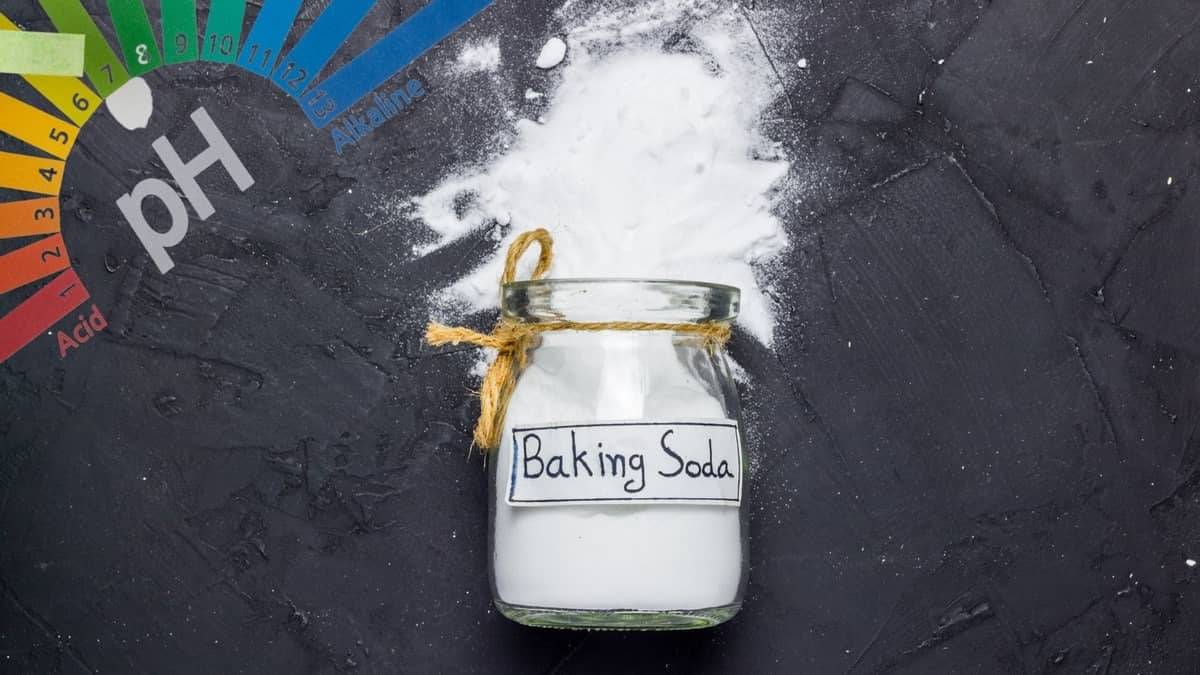Last Updated on April 1, 2022
When it comes to certain foods and drinks, there are chemical reactions that can occur when certain ingredients are combined. Is soda an acid or base is one common food-related chemistry question people may have. Understanding if a food or drink is an acid or base can help you get a better understanding of its chemical background.
Acids and bases will respond differently in recipes. They each have a distinct purpose and work with other ingredients to create certain reactions. As a baker, it can be helpful to understand the differences between the two.
What Is An Acid Vs A Base?
Acids and bases are an important part of chemistry, as well as also being an important part of baking and cooking. Acids and bases work to enhance flavor, tenderize meats and cause baked goods to rise.
An acid is a solution that on the pH scale has a value between 1 and 6.99. A base is a substance that on the pH scale has a value above seven. Bases neutralize acids, giving them the term alkaline.
In baking, an acid will react with a base to cause leavening. In a batter or dough, when a base and an acid react, bubbles form which causes the batter or dough to rise.
Is baking soda an acid or base?
Baking soda is a base and when combined with an acidic ingredient, it will cause a chemical reaction. It has a pH level of around 8.3 or 8.4 and when combined with an acid, it will create carbon dioxide which will release bubbles.
Baking powder, on the other hand, contains both a base and an acid. Due to this, it needs water, which is chemically neutral, or a liquid in order to work. It needs both moisture and heat in order to react.
Depending on the recipe, you may see it call for only baking soda, only baking powder, or both baking soda and baking powder. They are not ingredients that you can leave out of a recipe, as they make a big difference.
What an acid and base do in baking
In baking, there are different ingredients that are used as an acid. Buttermilk, yogurt, and lemon juice are among the most common acidic ingredients used in baking. Other acidic ingredients include vinegar, honey, molasses, cocoa powder (not Dutch-process), applesauce, and cream of tartar.
Baking soda is the most common base used in baking. It reacts with acids to release carbon dioxide and create air bubbles. In order for this process to happen, baking soda must combine with an acidic ingredient.
In addition to baking soda, some recipes may also call for baking powder. Baking powder is a combination of baking soda and cream of tartar, an acid, that responds to water. Double-acting baking powder can be helpful as it creates a second chemical reaction as it responds to the oven’s heat, causing more of a rise.
Is Soda An Acid Or Base?
Soda pop is acidic in nature, as it is generally has a pH of 3-4. It contains carbonated water along with flavoring and sugar to give it flavor.

The acidity in soda not only gives it a signature bubbly consistency, but it can also affect the taste. When carbon dioxide reacts with water, carbonic acid forms which stimulates nerve receptors in the mouth.
Though soda is fine to enjoy every once in a while, it is not healthy to consume on a regular basis. Overconsumption of soda or carbonated water can cause serious wear on the enamel of your teeth. In addition, soda also often contains a lot of sugar which can be unhealthy.
Using soda in baking
Some people will use soda pop while baking certain recipes. Since soda is an acid, it can be used in baking with a base as a leavening agent. In addition, soda also adds a great flavor and gives the cake moisture as well.
In certain boxed cake recipes, you can replace the water, eggs and oil the recipe calls for with a 12-ounce can of soda. It is an easy way to make a cake and it will result in an amazing tasting cake. Some of the most popular soda cake combinations include orange soda and white cake mix, lemon-lime soda and white cake mix, cream soda and strawberry cake mix and cola soda and chocolate cake mix.
RFAQK 100pcs Cake Pan Sets for Baking + Cake Decorating Supplies
Understanding The Uses Of Bases And Acids In Baking
In baking, a base and an acid are mixed together to create a chemical reaction that causes leavening. When a base, such as baking soda, combines with an acid, such as buttermilk, yogurt, or lemon juice, carbon dioxide is created. This produces bubbles which cause the batter or dough to rise.
Soda pop, which is an acid with a base around 3-4, can be used to cause leavening in certain recipes. In fact, some boxed cake recipes can be made by using just one 12-ounce can of soda. The results create a fluffy, flavorful, and moist cake that is truly delicious.
Do you have any questions regarding is soda an acid or base? If so, please ask any questions regarding acids or bases in the comment section down below.
FAQs
Is Soda Pop an Acid or Base?
Soda pop is an acid, as it has a pH level of about 3-4. It can be used in certain recipes, like cake, as a leaving agent.
Is Soda Water an Acid or Base?
Soda water or (carbonated) sparkling water is an acid, with a pH level between 3-4. Carbonated beverages are safe to drink as your lungs and kidneys remove excess carbon dioxide that comes from the drink.
Is Baking Soda Acidic or Basic?
Baking soda is a base, so it needs an acidic ingredient to create a chemical reaction. Common acidic ingredients used with baking soda include buttermilk, yogurt and lemon juice.
Is Caustic Soda an Acid or Base?
Caustic soda, also known as sodium hydroxide or lye, is a base. It has a pH level of 14 and is a strong alkaline inorganic compound.

Ever since she was a young girl, Anna has been a lover of desserts. As an adult, she enjoys
baking a variety of desserts from cakes, cookies, brownies, bread, and more from scratch. She
enjoys sharing her passion for baking with others who also have a sweet tooth. From properly
measuring ingredients to making sure they are the correct temperature, Anna knows the
importance small details can make in baking. She wants to share her experience with others in
hopes they can make the most delicious baked goods. When she’s not busy blogging, Anna
enjoys trying new recipes in the kitchen.


